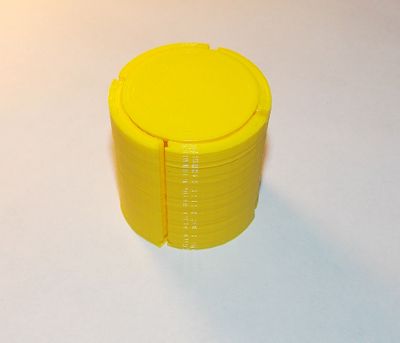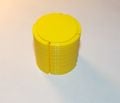No edit summary |
|||
| Line 66: | Line 66: | ||
==References== | ==References== | ||
<ref> web page: Aquapure Kickstarter Campaign Aims to End World's Freshwater Shortage, Available http://3dprint.com/22722/aquapura-kickstarter/ </ref> | |||
<references/> | <references/> | ||
Revision as of 13:36, 4 December 2014
Still Under Construction
3D Printable Salt Water Filter
Project developed by Dean Johnson
Template:Statusboxtop Template:Status-design Template:Status-prototype You can help Appropedia by contributing to the next step in this OSAT's status. Template:Boxbottom
Abstract

- Paragraph description of the OSAT - why is it Appropriate? What need does it fulfil? Are there case studies you have found of a technology being used successfully?
- I developed this saline water filter for the obvious reason of converting water from the ocean into potable drinking water for those without access to it. The concept behind the filter is extremely simple; Using solar energy in the form of sunlight to evaporate and then collect the fresh water. I printed it in four sections in order to illustrate the infinitesimal expandability of the design meaning that you that you can produce a fairly large filter from a relatively small printer.
- 777 OSAT Saline Water Filter
Bill of Materials
- Clear top piece if not printing with transparent filament (glass, plexiglass, etc.)
- Rope or tie of some sort to hold the pieces of filter together if printing in sections
- Gasket equivalent material, also only if printing in sections (silicone, sealant, rubber strips, cut o-rings, leather strips, etc.)
- Upload and link to all source files
- Upload and link to all STLs
Tools needed for fabrication of the OSAT
- MOST Delta RepRap or similar RepRap 3-D printer
Skills and Knowledge Necessary to Make the OSAT
- If you used special skill – link to relevant wikipedia or wikiversity articles/courses
Technical Specifications and Assembly Instructions
- Provide directions for print/assembly - be detailed enough in your “how to” to ensure that someone could construct the device from your description. Consider the elegance of IKEA like instructions.
- Include print time estimate
- Include assembly time estimate
- Including drawings or pictures of the device at stage of assembly at minimum. (http://www.appropedia.org/Special:Upload)
- Consider video if appropriate
| Example video summary of textbook |
|---|
Error in widget YouTube: Unable to load template 'wiki:YouTube' |
Common Problems and Solutions
- Include common mistakes/problems to avoid in building your OSAT and how to overcome them
Cost savings
- If your solution is not a low cost one then it is not really appropriate.
- Estimate your costs
- Find a commercial equivalent
- Calculate $ savings and % savings
References
- ↑ web page: Aquapure Kickstarter Campaign Aims to End World's Freshwater Shortage, Available http://3dprint.com/22722/aquapura-kickstarter/



